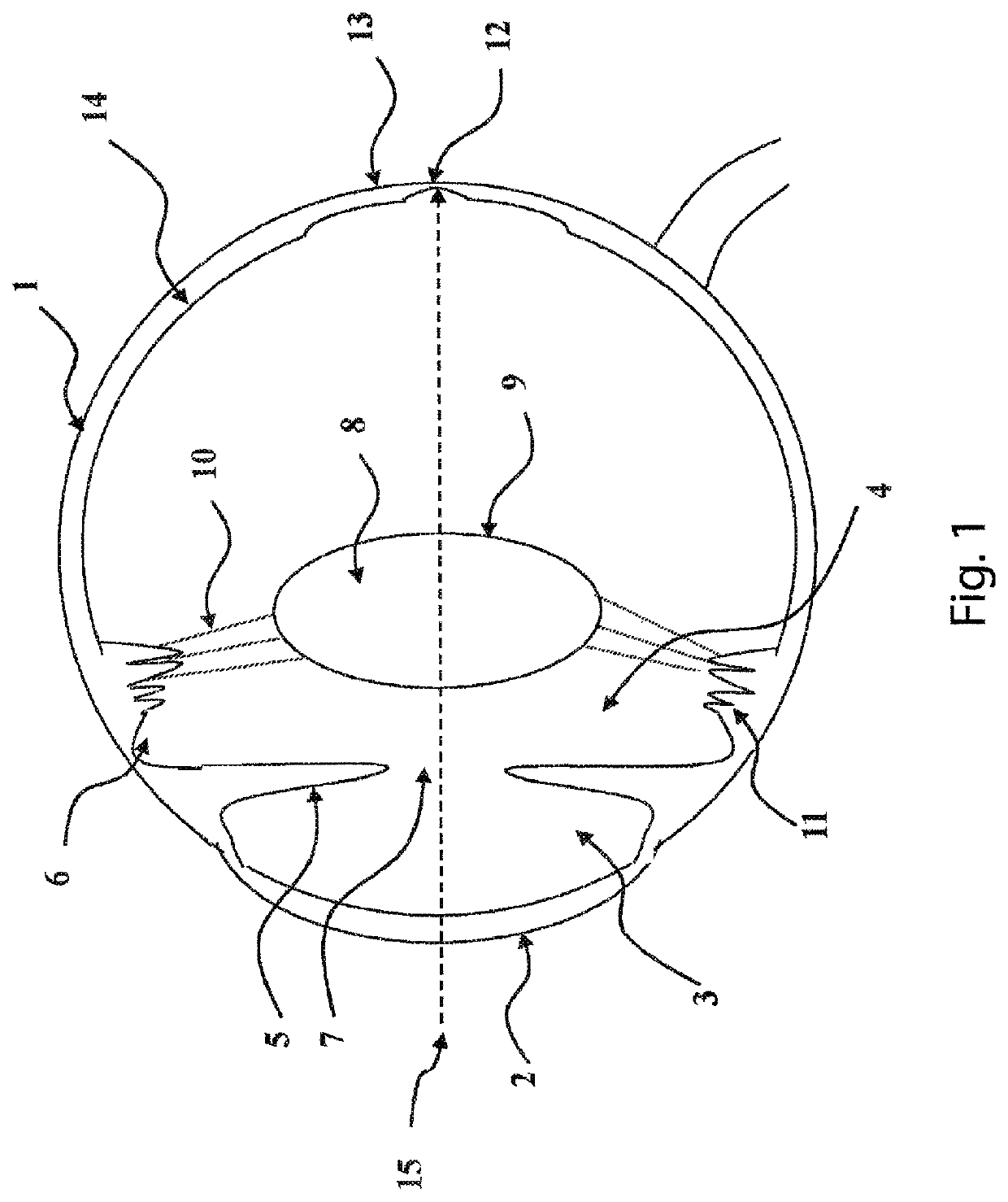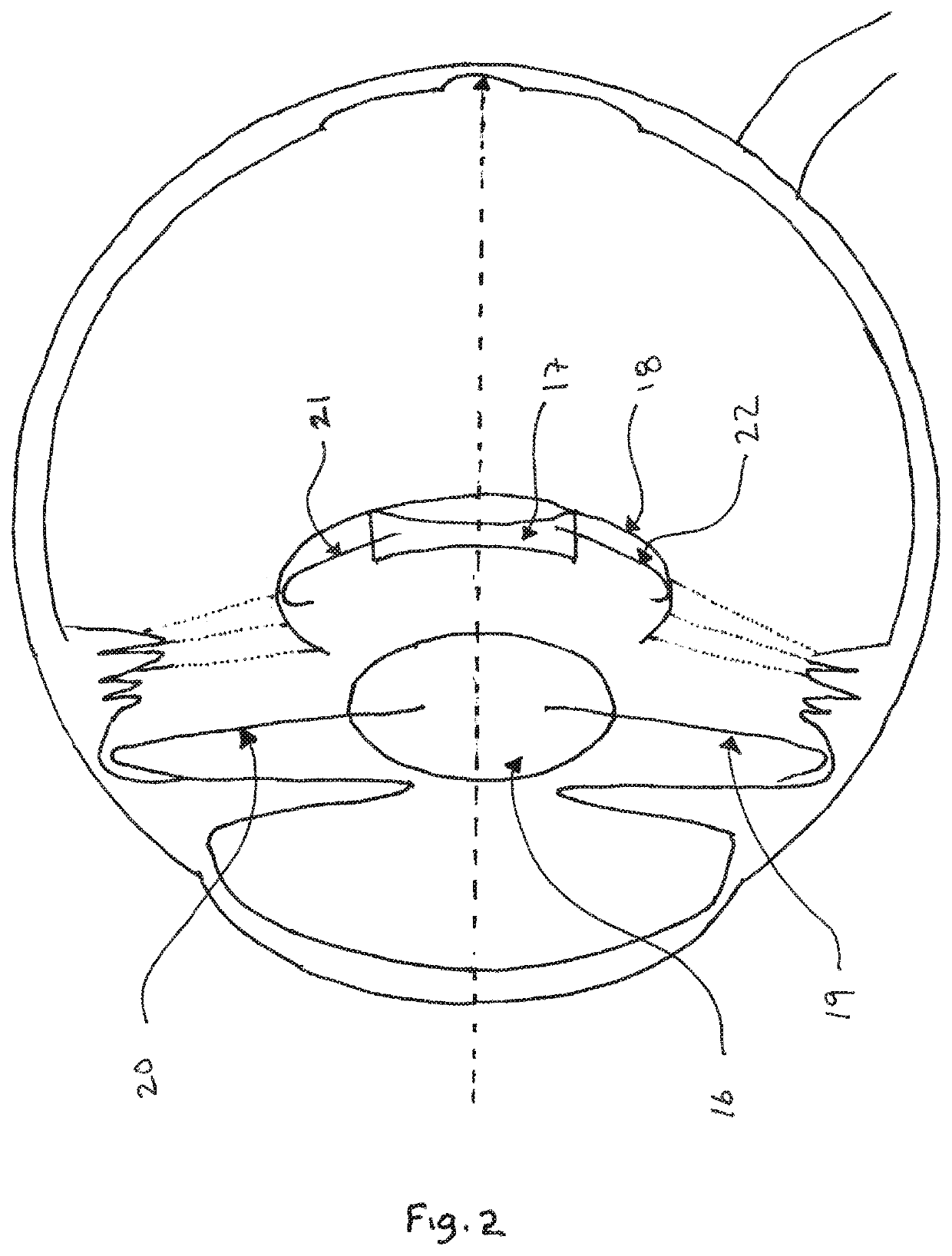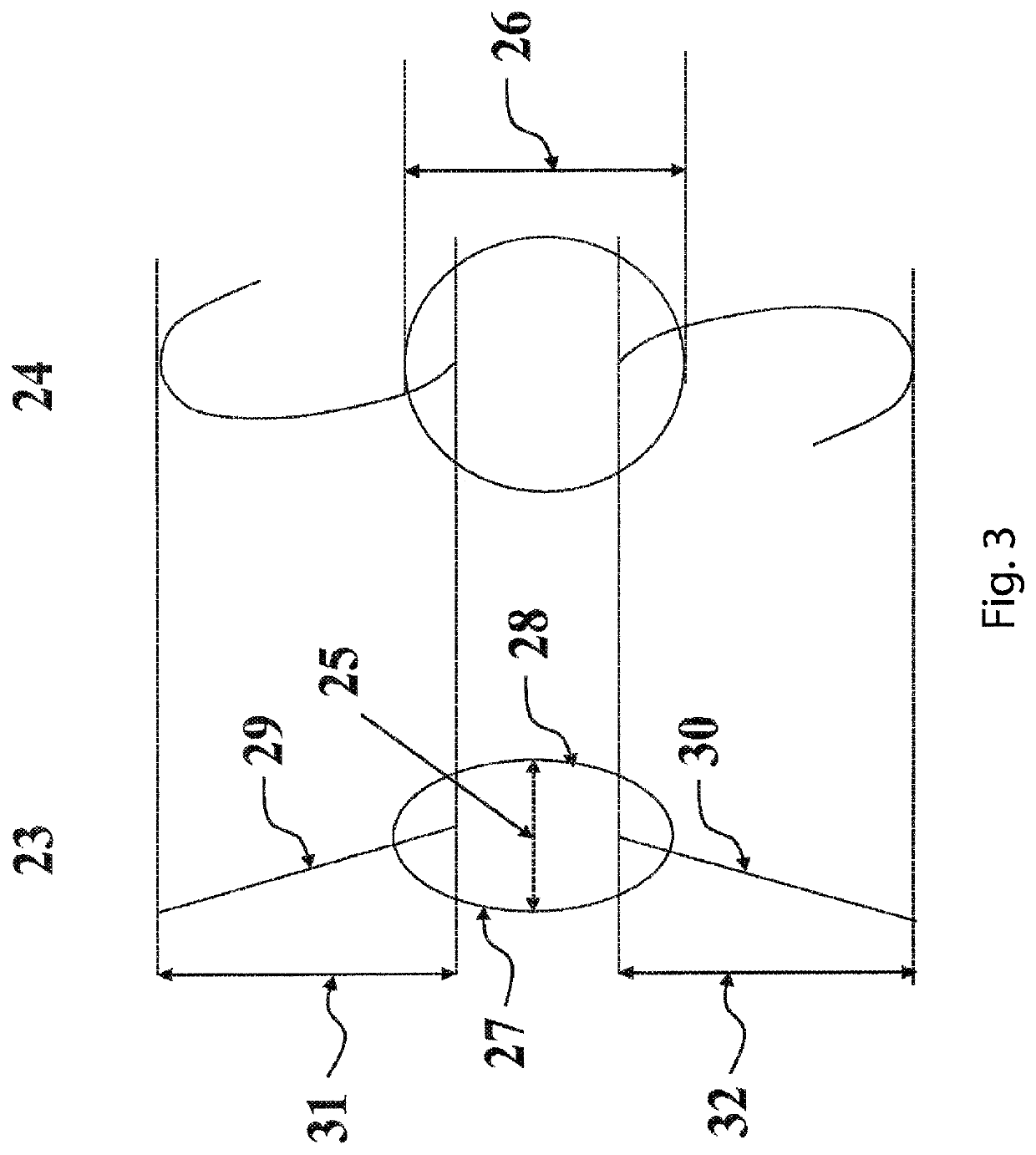Intraocular lens system
a technology of intraocular lens and lens body, which is applied in the field of intraocular lens, can solve the problems of reducing the field of view of patients, and affecting the treatment effect of patients, so as to increase the depth of focus of the system and increase the range of eccentricities
- Summary
- Abstract
- Description
- Claims
- Application Information
AI Technical Summary
Benefits of technology
Problems solved by technology
Method used
Image
Examples
Embodiment Construction
[0055]One embodiment of the present invention comprises two separate IOLs. The first is a light-converging lens shaped and sized for siting anteriorly to the second optic in the ciliary sulcus of the eye. The second is a posterior light-diverging lens shaped and sized for siting in the capsular bag. This embodiment is best employed with the IOLs sited in these positions but other embodiments allow for siting of the light-converging lens in the anterior chamber of the eye and the light-diverging IOL in the ciliary sulcus or both IOLs in the ciliary sulcus or both IOLs in the capsular bag. The IOLs are stabilized in their relative positions by means of haptics attached to or continuous with the optic of each lens and the configuration provides a magnified image in the manner of a Galilean telescope. However, in order to focus retinal images across a range of retinal eccentricities from the foveal centre the surfaces of the intraocular lenses are rendered aspherical. This sacrifices op...
PUM
 Login to View More
Login to View More Abstract
Description
Claims
Application Information
 Login to View More
Login to View More - R&D
- Intellectual Property
- Life Sciences
- Materials
- Tech Scout
- Unparalleled Data Quality
- Higher Quality Content
- 60% Fewer Hallucinations
Browse by: Latest US Patents, China's latest patents, Technical Efficacy Thesaurus, Application Domain, Technology Topic, Popular Technical Reports.
© 2025 PatSnap. All rights reserved.Legal|Privacy policy|Modern Slavery Act Transparency Statement|Sitemap|About US| Contact US: help@patsnap.com



